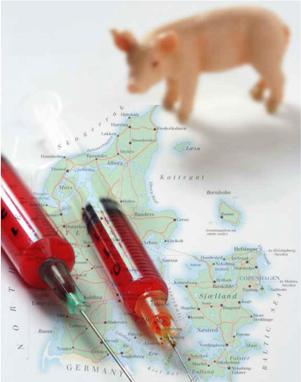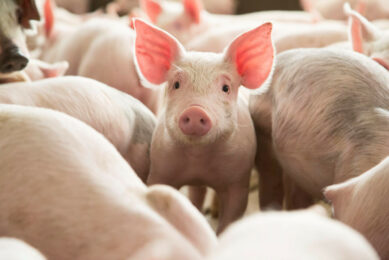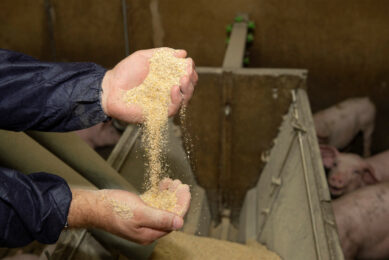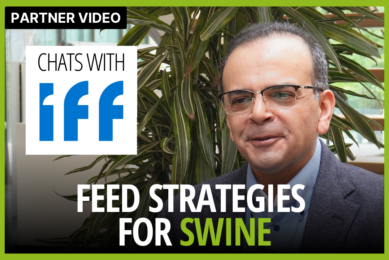Antibiotics: Spinning the data from Denmark

As the US Food and Drug Administration (FDA) considers restrictions on growth-promoting antibiotics in livestock, stakeholders on all sides of the debate point to evidence from Denmark, where the drugs were banned from chicken and pork operations in the 1990s due to concerns about antibiotic-resistant pathogens.
While growth-promoting antibiotics have been banned elsewhere in Europe, Denmark makes a particularly useful test case for several reasons. It has a sizable, industrialised meat industry; more than 10 years have passed since the restrictions took effect; and the Danish government has funded detailed monitoring of the effects of the ban on drug resistance in pathogens, with data reported publicly each year.
The Danish experience is often cited in the US debate on the issue, from reports by public health advocates to fact sheets from the American Veterinary Medical Association (AVMA). When Congress holds hearings on livestock antibiotics, Danish veterinarians are called to testify.
Public-health advocates hoping to restrict the use of antibiotics for growth promotion in the United States refer to a number of positive changes that followed the Danish ban: Overall antibiotic use in Danish livestock fell, as did the rate of resistance to growth-promoting antibiotics carried by those animals. In addition, the Danish pork industry — which accounts for most of the country’s meat production — not only survived without growth promoters but expanded briskly over the last decade.
Opponents of a US ban on antibiotics — including the pharmaceutical groups, meat industries and the AVMA — point to evidence that withdrawing growth promoters hurt pig health and drove an increase in the use of therapeutic antibiotics. They also note that there’s little indication that the ban has helped to reduce the number of drug-resistant infections acquired by Danish citizens.
Perhaps most interestingly, the Danish data suggest that withdrawing antibiotics for growth promotion had little impact on the growth rate of pigs.
Inside the Danish numbers
Data collected through Denmark’s antibiotic-resistance surveillance effort are presented in annual reports from DANMAP (www.danmap.org), the Danish Integrated Antimicrobial Resistance Monitoring and Research Program. As Figure 1 shows, Denmark’s total use of antibiotics per kilogramme of meat produced is lower today than it was before the bans on growth promoters began to take effect in chickens in 1995 (restrictions on use in pigs followed in 1998).
At the same time, the rate of use of therapeutic antibiotics has increased since the ban. The US pharmaceutical industry and the AVMA argue that the post-ban rise in therapeutic use shows that withdrawing growth-promoting antibiotics hurt animal health. But a 2010 American Journal of Veterinary Research paper authored by several Danish veterinary researchers offers several alternate explanations for the increase, including the appearance of new infectious diseases (which required antibiotic treatment) and a drop in the price of therapeutic antibiotics.
Even before the growth-promoter ban, Danish antibiotic use in meat production was well below US levels. In 2009, an average kilogramme of Danish pork, chicken or beef was produced with roughly 53 milligrammes (mg) of antibiotics. In comparison, US meat is produced with a total of 270 mg of antibiotics per kg, according to data from the USDA and the FDA. Counting only antibiotics defined as medically important by the FDA, the US figure is still at least 145 mg/kg of poultry, beef or pork.The rate of resistance (the fraction of samples that showed resistance to a given drug) to avoparcin, virginiamycin and avilamycin in Enterococcus faecium sampled from Danish broiler chickens fell dramatically in the late 1990s after growth-promotion uses of these drugs were phased out. Drug-resistance rates that had exceeded 60% fell to less than 10% within a few years.
In pigs, there was a sharp drop in resistance to erythromycin — a macrolide widely used in human medicine — among Campylobacter coli, E. faecium and Enterococcus faecalis samples after the use of macrolides as growth promoters ended in the late 1990s. In Camplyobacter coli, the rate of resistance fell from roughly 70% in 1997 to less than 15% in 2007, though rates have increased slightly since then. For E. faecium and E. faecalis, resistance rates dropped from more than 80% in 1997 to around 30% in 2001, but have since rebounded to between 35% and 45%. Macrolides continue to be administered to pigs in Denmark for non-growth-promotion uses.
Human antibiotic use and resistance
US food-animal groups and the AVMA argue that banning growth-promoting antibiotics would do little to improve public health because the link between antibiotic resistance in pathogens in animals and antibiotic-resistant infections in humans is weak. As evidence for this view, they point to Danish data showing that resistance to certain classes of antibiotics in pathogens sampled from humans increased during the last 15 years despite decreases in the use of those antibiotics in animals.
For instance, in samples of Streptococcus pneumoniae taken from humans, resistance to erythromycin has increased since the 1990s, even though the growth-promoter ban reduced the use of macrolides in animals by more than 80%. However, during the same period, the per-capita use of erythromycin use in humans in Denmark increased. Both sides in the debate agree that human — not animal — antibiotic-use trends are likely the primary driver of changes in antibiotic-resistant infection rates in humans.
The food-animal industry argues that the increased use of therapeutic antibiotics that followed the ban on growth-promoting antibiotics has helped to foster the development of resistance to therapeutic antibiotics. The Danish data provide some support for this contention, though there is a dispute about the degree to which the ban on growth-promoting antibiotics was responsible for the increase in therapeutic use.
During the past decade, samples taken from Danish pigs have shown an increase in the resistance of Salmonella Typhimurium to three classes of antibiotics that are used heavily to treat illnesses in livestock — tetracyclines, sulfonamides and ampicillin (a penicillin). The prescription use in animals of all of these drug classes has increased since the ban on growth promoters was enacted.
The industry and the AVMA also contend that one reason to continue using growth-promoting antibiotics is that they benefit animal health, citing the increase in swine mortality and illness rates that followed the ban. However, these rates were rising before the ban was implemented, for both weaner and finisher pigs. Since 2004, weaner mortality rates have fallen each year, and they dropped below pre-ban rates in 2008. Mortality and condemnation rates for finisher pigs levelled off in 2004.
Danish pork industry grows
The US meat and pharmaceutical industries argue that growth-promoting antibiotics help farmers to produce meat more efficiently, reducing resource consumption, lowering prices for consumers and helping farmers to remain profitable. The Danish figures provide little support for this perspective. Measured in total hog production, the Danish pig industry has grown substantially over the past two decades, including a 25% increase from 1996 to 2004. While production dipped after the ban began to take effect in 1998, the industry never fell back to pre-ban production levels and, after 2000, grew steadily for eight consecutive years.
Curiously, the withdrawal of growth-promoting antibiotics had little or no discernible impact on rates of growth and feed efficiency — the very traits the drugs are supposed to enhance. The feed-efficiency ratio (feed conversion) has slightly dropped since 1998, while growth rates (grammes/day) increased substantially in the years during and after the ban. Weaner growth rates were declining gradually in the years before the ban, but have increased since. Finisher growth rates increased before, during and after the implementation of the ban.Antibiotic use practices are only one of many factors influencing growth rate and feed efficiency. The Danish swine industry has an aggressive breeding programme designed to improve growth; changes in husbandry practices also play a role.
Lessons for the United States?
The Danish experience suggests that if the United States were to ban antibiotics in livestock for the purpose of hastening growth, the change would not ruin the meat industry and might even prove to be a boon. At the same time, such a ban would not by itself solve the problem of antibiotic resistance in human pathogens and could in some ways aggravate the problem. Regardless of government mandates, other forces already are changing the way the US meat industry uses antibiotics. In the poultry sector, pressure from consumers and food retailers such as KFC and McDonald’s led Tyson Foods and other major producers to stop using growth-promoting antibiotics during the past decade. While these decisions were made with public relations in mind, they may have saved producers money as well. A 2002 study funded by Perdue Farms Inc., America’s third-largest poultry company, found modest production benefits from the use of growth-promoting antibiotics; 2007 analysis of the Perdue study data concluded that these benefits were too small to cover the cost of the antibiotics.
Research on US hog farms has also indicated that growth-promoting antibiotics have limited benefits. A 2002 study in the Journal of the American Veterinary Medical Association on pigs raised in modern barn systems — the kind that house more than three-quarters of the nation’s hogs — found that standard courses of growth-promoting antibiotics did not actually promote growth after the nursery phase (when the animals reach 25 kg). The most likely explanation: Hygiene in the barns was good enough that the addition of antibiotics failed to increase feed intake and growth rate. Despite this result, which is supported by subsequent research, many pork operations continue to use growth promoters after the nursery phase, according to the study’s author, Dr. Steve Dritz, a KSU professor who studies ways to optimise swine production. While Dritz estimates that the use of growth-promoting antibiotics in the swine industry has declined somewhat in recent years, he notes that pharmaceutical companies — as well as many veterinarians and animal nutritionists — still promote the drugs, and many swine farmers continue to believe that they deliver an economic benefit. “They’re highly marketed feed additives,” Dritz says. “If you go to the (American Association of Swine Veterinarians) meeting, the major sponsors are the pharmaceutical companies. They’re a lot more visible than a paper from 2002.”
Jim Downing is a freelance writer for VIN News Service, Davis, California, USA.












